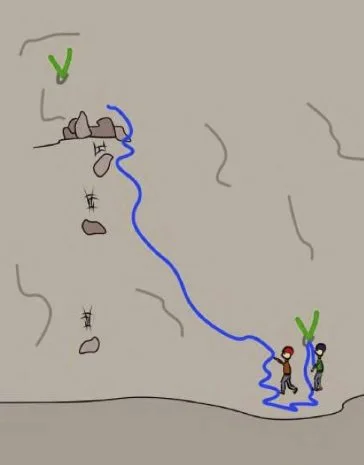Two options for rappelling loose rock
Rappelling down a section of loose rock can be very dangerous. Here are a couple of ways to hopefully reduce the risk.
1 - Consider simul rappelling
I’m generally not a fan of the simul rappel. In fact, I have a whole article on reasons not to do it.
However, one of the rare cases when it might make sense is when rappelling through loose rock. If both climbers rappel together, anything that they kick off is not going to hit the other person who would otherwise be below them.
2 - The “Zigzag” rappel
With the zigzag rappel, you attempt to move sideways as you go down, with either a pendulum or tension traverse, to make the next anchor off to one side and hopefully out of range of any falling rocks. For the next rap, you might swing back to the other side, hence the name.
Generally, a tensioned rappel will give a lower chance of the rope being loaded over sharp edges and dislodging more rocks. If you can't do that, a pendulum might work, but to be aware of these potential extra hazards.
A zigzag rappel might mean placing gear as you descend, clipping both strands to it, and then probably leaving it behind when you pull your rope.
It's highly recommended to use a third hand auto block when doing this, because it's likely you’ll need to go hands-free.
image: vdiffclimbing.com, shared with permission


